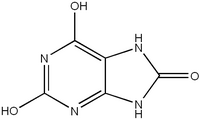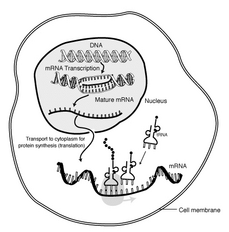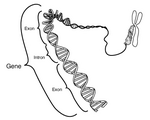It used to be that getting clean food wasn't so hard. A trip to local health food store and a quick scan of food labels, and you could fill your 'fridge with whole, healthy foods. Now even tofu is likely to be tainted with genetically modified organisms, and your favorite natural tabouli mix may contain irradiated herbs and spices. Is nothing sacred? Not in the new world of "biotech" foods.
Genetic Engineering: Weird Science
Flounder genes in your pasta sauce? Insect genes in your mashed potatoes? Welcome to the high-tech world of genetic engineering, the process of artificially shuffling genes from one organism to another. Proponents of genetic engineering say it's a sure way to boost food supply, reduce pesticide use and possibly breed super-foods with extraordinary nutritional profiles. The problem is, no one really knows the long-term effects of such complex genetic manipulation -- and the potential dangers to humans and the environment are substantial. Don't think that genetic engineering is merely a stepped-up version of traditional cross-breeding techniques. It's a new, weird science that allows the insertion of genes from any plant or animal into any other organism. One example: an "antifreeze" gene that allows flounder to survive in very cold water is inserted into tomatoes to boost their tolerance to frost. Or insect-killing genes from bacteria may be inserted into corn or potatoes to up their defenses against pests.
Shuffling genes between species raises plenty of scary possibilities. The technology is new enough to be frighteningly imprecise, with generally uncertain outcomes. And because no long-term safety tests have been conducted, no one really knows the full scope of potential health risks. According to and editorial in a 1996 issue of the New England journal of Medicine, "Questions of safety vex federal regulators and industry as well as the public. The transfer of genes from microbes, plants or animals into foods raises issues about the unintended consequences of such manipulations."
Some of these consequences include the production of new allergens in foods and unexpected mutations in an organism, which can create new and higher levels of toxins. One example: in 1993 37 people died and more than 1,500 people suffered partial paralysis from a disease called eosinophilia-myalgia, which was eventually linked to a tryptophan supplement made with genetically engineered bacteria.
Another worrisome possibility is that insects, birds and the wind can carry genetically altered seeds into neighboring fields and beyond, where they can cross-pollinate, threatening the future of wild crops, genetically natural crops and organic foods.
And once genetically modified organisms are introduced into the food supply, they can't be recalled. "Unlike pesticide use, genetic engineering introduces living organisms that will be replicated in other living organisms," Says Susan Haeger, president/ CEO of Citizens For Health, a non-profit consumer advocacy group based in Boulder, Colorado. "Once they're in the environment, there's no way to bring them back."
Irradiation: Zapping Our Food
What happens when you cross a potato with 10,000 rads of ionizing radiation -- more than 2,500,000 times the dose of a chest X-ray? Better find out before you eat your next order of french fries. Irradiation, used to extend shelf life and kill microorganisms in food, can also lower nutritional value, create environmental hazards, promote the growth of toxins and produce compounds called unique radiolytic products, which have been associated with a variety of biological abnormalities.
Food irradiation was proposed by the Atomic Energy Commission in the early 1950s as a way of dealing with a formidable nuclear waste problem from the manufacture of nuclear weapons, according to Michael Colby, editor of the Food & Water Journal. In the mid-1980s, the FDA began to approve a huge range of foodstuffs for irradiation, including meat, poultry, produce, herbs and spices. Since then, permissible levels of radiation have been dramatically increased, and the amount now allowed is substantial.
Proponents say irradiation destroys harmful microorganisms and may reduce outbreaks of salmonella and trichinosis from meat. It is also said that irradiation increases shelf life of various foods and can reduce the use of toxic chemicals as post-harvest fumigants. Absurd, say irradiation opponents. "Irradiation is destroying our food supply," says Gary Gibbs, D.O., author of The Food That Would Last Forever. "It is nothing more than a toxic band-aid approach to the problems."
Adequate cooking, sanitary handling and preparation and hygienic processing methods are better ways to reduce illness from microorganisms in meat. Shelf life is an unfounded concern in the United States, and the cost of irradiation in less-developed countries would usually offset savings from extended shelf life. As for the argument that irradiation would reduce the need for post-harvest chemical fumigants, some say that irradiated foods are more prone to infection by certain fungi.
The FDA and irradiation proponents claim the process is safe, but compelling evidence to the contrary says otherwise. Meanwhile, considerable controversy exists regarding safety studies. Although 441 studies have been conducted on food irradiation, the FDA based their toxicity evaluation on only five animal studies, according to Gibbs. Of these five studies, two were found to be methodologically flawed, one suggested that irradiated food could have adverse effects on older animals and two investigated foods irradiated at doses well below FDA-approved levels.
Few human trials exist, because of obvious ethical considerations, but some small studies have raised concerns, suggesting that food irradiation can cause chromosomal abnormalities.
Irradiation of food can lead to cardiac disease, cancer, kidney disease, fetal malformations and a dramatic shortening of the life span, according to Gibbs. "A lot of studies have shown problems with the heart, specifically that irradiation causes bleeding in the heart," he says. "Also, when food is irradiated, it creates benzene and formaldehyde, which are known mutagens and suspected carcinogens."
Irradiation also appears to cause significant nutrient loss in foods, especially of vitamins A, B, C and E. Generally, the higher the amount of radiation, the greater the nutrient loss. Add to that environmental concerns, including hazards in transporting and handling radioactive isotopes, danger of exposure to workers and possible security problems at irradiation facilities. Right now, there are about 50 irradiation facilities in the United States, says Colby, but a huge increase is expected if irradiation is embraced in the marketplace. The result: a substantial increase in potential environmental disasters.
What To Do
Because biotech foods are still new, the core issues are safety testing and consumer awareness. "It may be that there are some positive aspects to biotech food," says Haeger. "We don't know. Our concern is that the commercialization of biotech foods and their integration in the food system is outpacing the science and is being promoted without the awareness of the public."
More stringent safety testing is critical, as are more comprehensive labeling requirements. Under current laws, irradiated foods must be labeled as such, with a written notice and a "radura" -- the international irradiation symbol -- but processed foods and foods prepared for restaurants, hospitals or school cafeterias are exempt from such labeling. Additionally, no labeling requirements exist for genetically engineered foods.
Some say, genetic engineering and food irradiation should be banned. "This is beyond labeling considerations," says Gibbs. "It should be completely outlawed. We shouldn't even have to have conversations about labeling." In the meantime, the primary thrust is toward public awareness.
"Our main concern is for consumers to be aware of food manipulation," says Haeger. "We want to ensure that they are informed and have adequate information on what they're purchasing, so they can make their own choices."
Speak Out Against Manipulated Foods ...
Tired of your food supply being tainted? You can have a voice. "Consumers have to demand that the government require labeling so they can make a choice," Haeger says. "The biotech industry has had so much influence, there won't be any changes unless people speak out." Some ideas:
* Let lawmakers know you're concerned. The Citizens For Health web site (www.citizens.org) allows you to send a message to your legislators. Just type in your zip code, personalize and customize the prewritten message, and email or print and mail it to legislators.
* Take the time and energy to educate yourself and others. Buy books and check out web sites for the latest information on manipulated foods.
* Remember that your natural foods retailer is a partner in wanting natural healthy foods. Haeger says. "Most retailers are trying their best to supply untainted food. Don't point fingers -- instead, let them know you're concerned and ask how you can support them."
REFERENCES
Belongia EA, et al. "The eosinophilia-myalgia syndrome and trytophan," Annu Rev Nutr 12:235-56, 1992.
Bhaskaram C, Sadasivan, G. "Effects of feeding irradiated wheat to malnourished childre,." American Journal of Clinical Nutrition 28(2): 130-35, 1975.
Hickman JR, McLean LA, Ley FJ. "Rat feeding studies on wheat treated with gamma radiation," Food and Cosmetic Toxicology 2(2): 175-180, 1964.
Khattak AB, Klopfenstein CF. "Effect of gamma irradiation on the nutritional quality of grains and legumes," Cereal Chemistry 66(3): 171-72, 1989.
McGivney, WT. "Preservation of food products by irradiation," Seminars in Nuclear medicine, 18:36, 1998.
Nyhan WL, et al. "New approaches to understanding Lesch-Nyhan disease," New England Journal of Medicine 334(24):1602-4, 1996
Piccioni, R. "Food irradiation: contaminating our food," The Ecologist, 18(2):48, 1998.
Radomski JL, et al. "Chronic toxicity studies in irradiated beef stew and evaporated milk," toxicology and Applied Pharmacology, 7(1): 113-21, 1965.
Raica N, Scott J, Nielson N. "Nutritional quality of irradiated foods," Radiation Research Review 3(4): 447-57, 1972.
Shanghai Institute of Radiation Medicine and Shanghai Institute of Nuclear Research. "Safety evaluation of 35 kinds of irradiated human foods," Chinese Medical Journal, 100(9): 715-18, 1987.
Lisa Turner is the author of Mostly Macro and Meals that Heal. Visit her website, www.healthy.net/lisaturner.
COPYRIGHT 2000 PRIMEDIA Intertec, a PRIMEDIA Company. All Rights Reserved.
COPYRIGHT 2000 Gale Group




